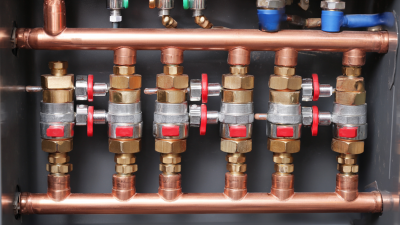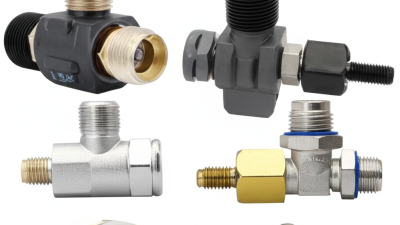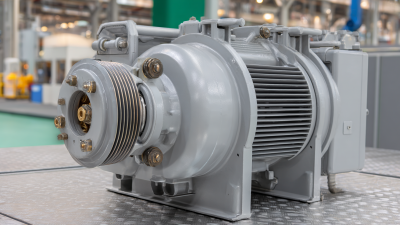




 In the world of industrial operations, the selection of the right Access Valve is crucial for ensuring optimal system performance and reliability. Access Valves play a pivotal role in providing essential access points for maintenance, monitoring, and adjustment of various processes. However, with a plethora of options available in the market, choosing the appropriate Access Valve to meet specific requirements can be a daunting task. This ultimate guide aims to equip industry professionals with a comprehensive checklist that outlines the key considerations and criteria for selecting the ideal Access Valve tailored to their unique industrial needs.
In the world of industrial operations, the selection of the right Access Valve is crucial for ensuring optimal system performance and reliability. Access Valves play a pivotal role in providing essential access points for maintenance, monitoring, and adjustment of various processes. However, with a plethora of options available in the market, choosing the appropriate Access Valve to meet specific requirements can be a daunting task. This ultimate guide aims to equip industry professionals with a comprehensive checklist that outlines the key considerations and criteria for selecting the ideal Access Valve tailored to their unique industrial needs.
From material compatibility to pressure ratings and installation methods, each factor will be dissected to help streamline the decision-making process and enhance operational efficiency.
When selecting access valves for industrial applications, several key factors must be taken into account to ensure optimal performance and reliability. One of the most crucial considerations is the valve's material composition. According to a recent report by the International Valve Association, over 40% of valve failures in industrial applications are attributed to corrosion or material degradation. Thus, choosing the right material—such as stainless steel or high-grade alloys—can significantly enhance the valve's longevity, particularly in corrosive environments.
Another essential factor is the valve's pressure and temperature ratings. A study published by the Valve Manufacturers Association indicates that improper pressure ratings contribute to 30% of operational failures in industrial systems. It is vital to assess the specific operational conditions the valve will face, including fluctuations in pressure and temperature, to ensure that it can handle the demands. Furthermore, considering the valve’s design, such as whether it is a ball, butterfly, or gate valve, can influence the efficiency of flow control. Matching the valve's characteristics with the unique requirements of your industrial application is critical for maintaining system integrity and performance.

Access valves are critical components in various industrial applications, allowing for controlled entry into pipelines and tanks. Different types of access valves serve specific purposes tailored to industry needs. For instance, ball valves are commonly used in oil and gas sectors for their reliability and ease of use. They offer a tight seal and are perfect for quick shut-off applications, making them ideal for high-pressure environments.
In contrast, gate valves are favored in water treatment facilities. Their design minimizes pressure drop and is well-suited for on/off control of fluid flow. In chemical processing, butterfly valves are often utilized for their compact design and efficient flow control, making them suitable for large-volume fluid transfer. Understanding the distinct characteristics and applications of each type of access valve is essential for selecting the right one for your industrial requirements, ensuring both efficiency and safety in operations.
When selecting the right access valve for industrial applications, a deep understanding of valve specifications is crucial. The materials used in valve construction directly influence their durability, compatibility, and resistance to corrosive substances. For instance, stainless steel valves are often favored in chemical processing due to their strength and resistance to rust, while plastic valves might be more suitable for applications involving less aggressive fluids. It’s essential to choose the right material that aligns with the specific industrial environment to ensure optimal performance and longevity.
In addition to material considerations, the size of the valve is a critical factor that impacts flow rate and system efficiency. Access valves come in various sizes, and selecting the right one ensures that it can handle the necessary fluid dynamics without creating bottlenecks. Furthermore, understanding pressure ratings is vital; valves must be rated for the maximum pressure they will encounter in operation. Choosing a valve with an appropriate pressure rating enhances safety and reliability, preventing potential failures that could lead to costly downtime and maintenance. When all these specifications are harmoniously aligned, businesses can enhance operational efficiency and ensure the longevity of their systems.
| Valve Type | Material | Size (Inches) | Pressure Rating (PSI) | Temperature Rating (°F) |
|---|---|---|---|---|
| Ball Valve | Stainless Steel | 2 | 150 | 200 |
| Gate Valve | Cast Iron | 4 | 300 | 180 |
| Globe Valve | Bronze | 1.5 | 200 | 220 |
| Check Valve | PVC | 3 | 150 | 140 |
| Butterfly Valve | Aluminum | 6 | 200 | 180 |
Access valves are essential components in various industrial settings, playing a crucial role in maintaining both safety and operational efficiency. These valves allow for easy access to systems needing maintenance or inspection, ensuring that processes can be carried out smoothly without compromising safety standards. The integration of innovative technologies, such as automation and advanced materials, further enhances the reliability and performance of access valves, making them indispensable in high-performance environments.

In the context of emerging technologies, the latest research highlights the impact of integrating renewable energy sources alongside traditional operations. This alignment has implications for access valve applications, particularly in systems designed for green hydrogen production and efficient energy management. As industries push towards sustainability, well-designed access valves will contribute significantly to optimizing operational workflows while adhering to stringent regulatory requirements, thus supporting the broader goal of enhancing safety and efficiency in industrial applications.
When selecting the right access valve for your industrial needs, it's crucial to conduct a thorough cost-benefit analysis. Investing in quality access valves not only ensures long-term performance but can also lead to significant savings. According to the 2025 Manufacturing Industry Outlook, manufacturers are increasingly prioritizing investments in their digital and data foundations to enhance innovation and efficiency. High-quality valves can reduce maintenance costs and improve system reliability, resulting in lower operational risks.
Moreover, the economic implications of investing in superior access valves extend beyond immediate savings. For instance, biogas production, a renewable energy source, has shown to yield substantial economic benefits in industries utilizing efficient energy solutions. Well-designed access valves play a critical role in optimizing energy production processes, contributing to sustainability and cost-effectiveness. By analyzing the financial and operational advantages of these components, organizations can make informed decisions that resonate with their long-term strategic goals, thereby enhancing overall performance and competitiveness in the market.








